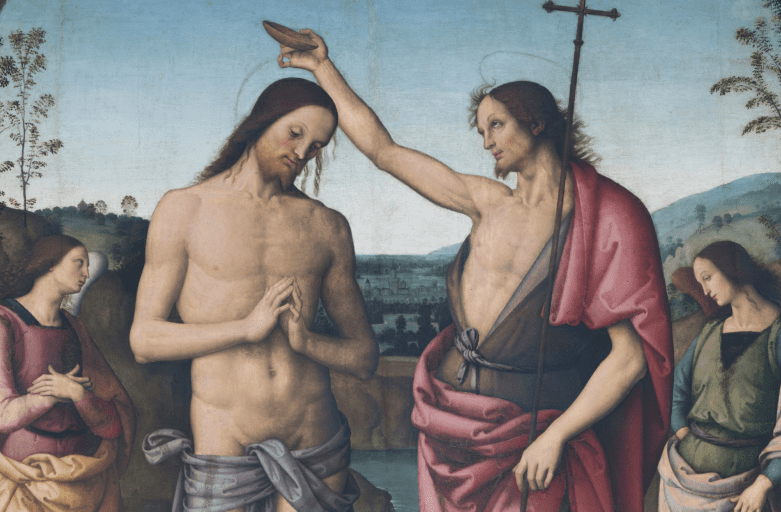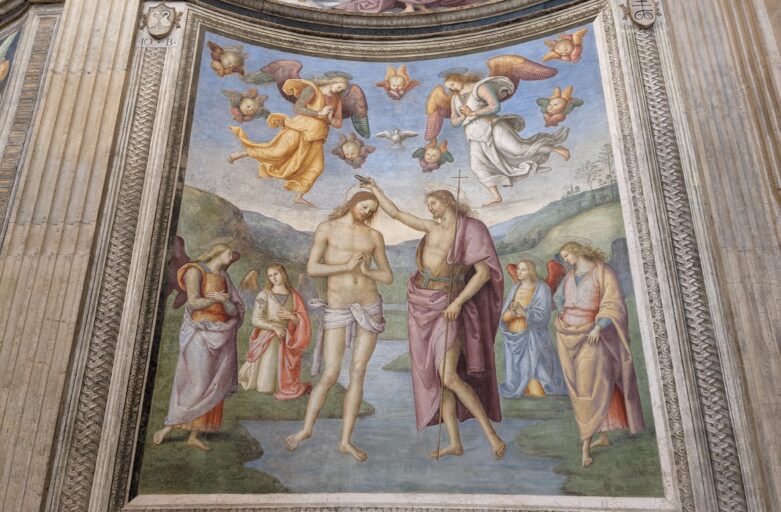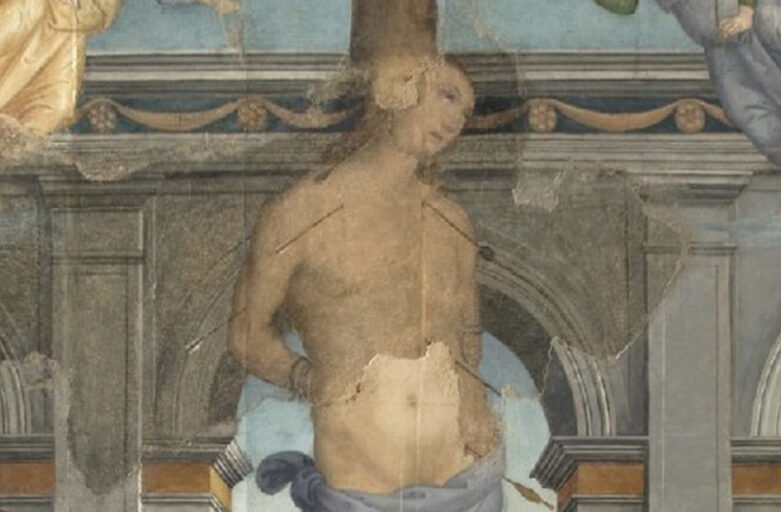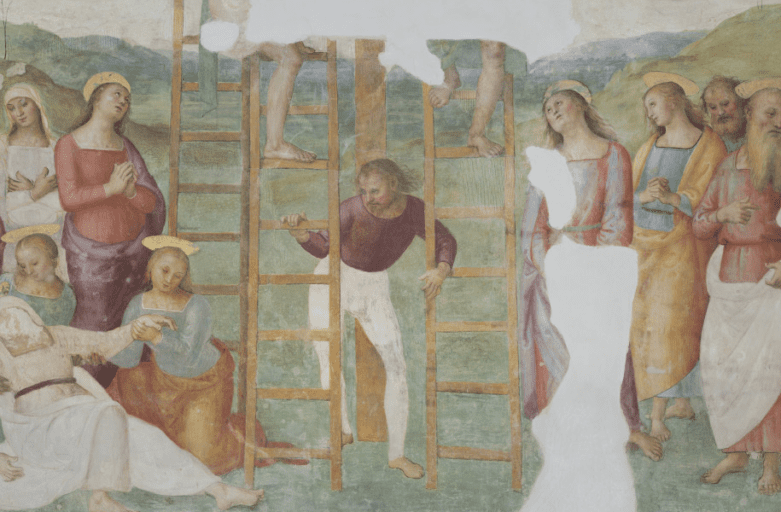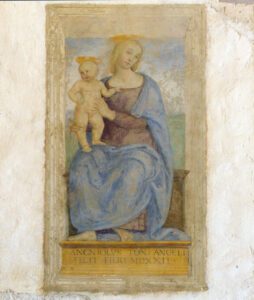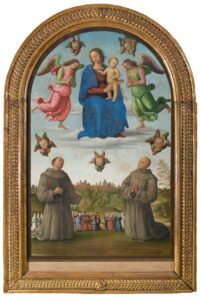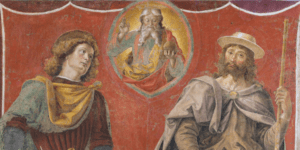The “Baptism of Christ” in Saints Gervasio and Protasio’s Cathedral
The Baptism of Christ is a painting on panel existing in Saint John the Baptist’s chapel inside the cathedral of Città della Pieve, or Saints Gervasio and Protasio’s Cathedral. It dates back to about 1510. Perugino had already made such a composition in 1482 for a fresco on the same subject – though on a more extensive scale – in the Sistine Chapel in Rome. He apparently loved this pattern much, in fact he also used it on other occasions, from the 1498-1500 panel now in Vienna at the Kunsthistorisches Museum to the oratorio (small church) in Foligno, Umbria, as well as one of the panels in Saint Augustine’s Church in Perugia, made in 1512-23.
Description
Jesus and John the Baptist are seen frontally and symmetrically. They keep their feet in the Jordan River, that is here depicted like a shallow, clear, placid brook. John has a long, thin pole topped with a cross in his left hand, while his right hand pours the water on Christ’s head. Jesus, absorbed in prayer, only wears a cloth around his loins. The anatomy of both, carefully studied and rendered, shows the influence of Greek and Latin sculpture for the framing of the bodies. Their dignified, refined postures confer solemnity on the scene.
Two angels, drawn on a lesser scale than the main personages so as to stress their secondary role, are set on the left and on the right side by side, as if they had been arranged in a rank. Perugino employed this pattern quite often; he liked it better than dynamic compositions.
The Holy Spirit, in the shape of a white dove hovering over them, looks at the event from above.
The background: landscape and aerial perspective
Perugino sets the Baptism of Christ in a natural landscape: a place with rocks, water flowing between them, green hills stud with thin trees, a plain that stretches toward the horizon, illuminated by a clear, wonderful sky. The artist was a master in aerial perspective, that is, a pictorial technique that suggests the distance of objects by means of blurring and color variations. And as a matter of fact, our varied perception of things in the distance is caused by the humidity in the atmosphere.
Discover the testimonies of Perugino today
Routes and itineraries to discover the works of the divine painter
